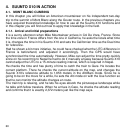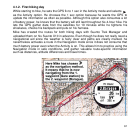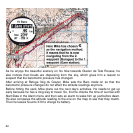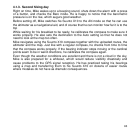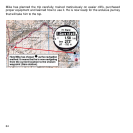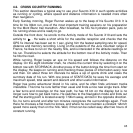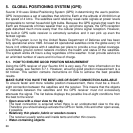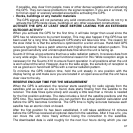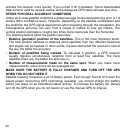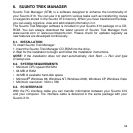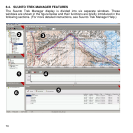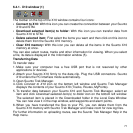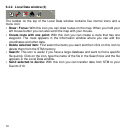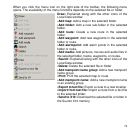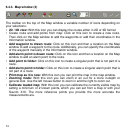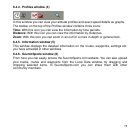68
activate the receiver more quickly, if you turned it off in between. Some downloaded
data remains valid for several weeks, and subsequent GPS starts will take less time.
STRIVE FOR IDEAL ACCURACY CONDITIONS
Under all-in-view satellite conditions a global average horizontal positioning error is 7.8
meters (95% confidence level). However, depending on the satellite constellation and
the distortion the GPS signal experiences when traveling through the ionosphere, the
instantaneous accuracy can vary from a couple of meters to over ten meters. The
vertical position estimate is roughly two times more inaccurate than the horizontal.
The following factors affect the position accuracy:
• Relative geometric position of the satellites. This is the most important factor.
The best position estimate is obtained when satellites from four different directions
and angles can be tracked. In other words, the less obstructed the receiver's view of
the sky, the better the accuracy.
• Number of satellites being tracked. To calculate a position, a GPS receiver
usually requires simultaneous reception from at least four satellites. The more
satellites there are, the better the accuracy is.
• Number of measurements made on the same spot. When you make more
measurements, some errors will be averaged out.
MAKE SURE THE BATTERY IS FULLY CHARGED AND TURN OFF THE GPS
WHEN YOU DO NOT NEED IT
Satellite tracking consumes a lot of battery power. Even though Suunto X10 uses the
lowest power consuming GPS technology available, you should charge the battery
before you leave for an extended outdoor activity. To increase the battery life, always
turn off the GPS when you do not need it or use the manual GPS fix interval.



